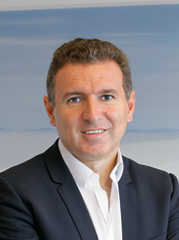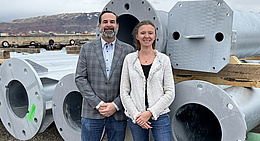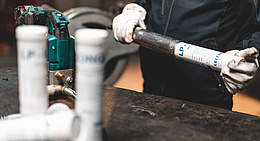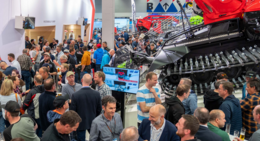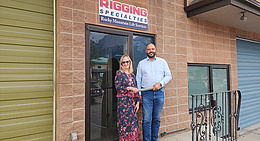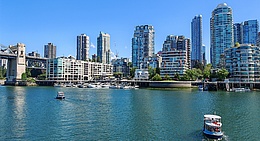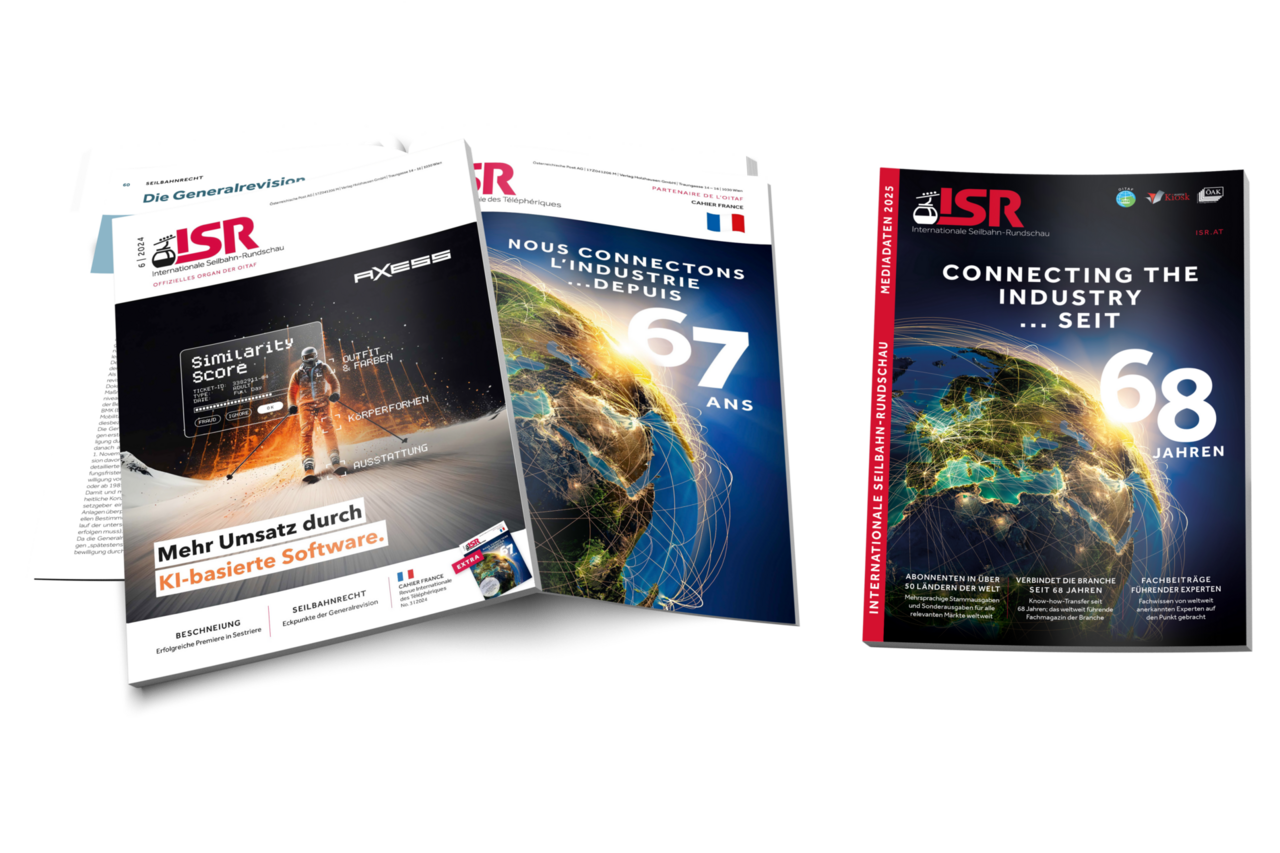ISR: Can you offer a first interim report on developments since you took office?
Martin Leitner: We have had some very constructive meetings, and the current range of topics is wide-ranging. It is doubtless an exciting task to strike a balance between the views of the various interest groups, and this often calls for serious debate during the meetings. To my mind, however, everything has so far gone very well.In 2012 we had two seminars on “Transportation of children and communication with young people to improve safety” and “Safety of transportation by rope: legal issues and practical experience”.And this year there will be a seminar at Interalpin on the subject of “The operation of ropeway installations in exceptional operating conditions: experience and measures”, a very practical subject that addresses the intermediate area before rescue becomes necessary. As always, admission to the seminars is free.
ISR: Urban ropeways are becoming increasingly popular worldwide. In which countries do you see the greatest potential and what can OITAF do to further strengthen this trend?
The 2011 OITAF Congress in Rio certainly made a significant contribution. Work Committee no. I (Ropeway Engineering and Technical Recommendations) and Work Committee no. VI (Optimization of Ropeway and Ski-Tow Operation) will continue to address the subject, and invitations will be sent out to urban ropeway operators so that we can benefit from their experience. It is my personal wish that we should move forward in this field.
ISR: One of OITAF’s objectives is to “promote the economic, technical and legal development and progress in the ropeway business”. What is being done at OITAF to promote economic development?
This is the remit of Work Committee no. IV (Juridical, Administrative, Economic and Statistical Matters), which is working on the following: legal framework (EU directives and national codes), economic development, business ratios, relevance for national economies, marketing, operational aspects, trends, and stand-alone lifts and small ski areas. These topics are being discussed and analyzed by the committee with reference to specific examples.
ISR: OITAF was founded because of the need to bring together in a single organization the three main pillars of the ropeway business, namely the ski area operators or ropeway companies, the manufacturers and the supervisory authorities (as representatives of both government and users) in order to find joint solutions to existing problems. How effective is cooperation with the ski area operators and ropeway companies? Is there room for improvement?
There are the national associations of operators, which are fairly active in sharing information and hold regular discussions in the framework of FIANET. Of course, it is not always easy to find a common denominator. Take the case of Switzerland, for example, which is simply not affected by certain problems created by Brussels. Or think of the very considerable national differences with regard to who owns what. The current debate relating to the EU Directive on Concessions shows how great the differences can be within Europe alone. At all events, the representatives of the operators have a strong voice in the various OITAF bodies and Study Committees.As far as the manufacturers are concerned, they coordinate their interests in the framework of the IARM, which tries to find a common denominator with regard to proposals made by the national organizations like ACIF in Italy.The representatives of the technical supervisory authorities have been holding their annual meetings in the framework of ITTAB for 63 years now. That provides a platform for discussing and analyzing accidents and current technical issues. These meetings are important in that they generate an exchange of information in the interest of improved safety. The authorities are increasingly interested in finding common solutions with regard to international codes and regulations. To that extent, this is an important instrument for communicating European standards to the new ropeway markets in South America and Eastern Europe, for example, so that we can be sure of finding safe reference installations in those regions in the near future.I think that we have a good working climate in the various bodies of OITAF and that the groups within the ropeway industry are communicating effectively and working well together.ISR: How are you personally getting on with your office as President of OITAF?It is lot of work if you want to help OITAF develop in accordance with its objectives. But I find the task exciting and rewarding, and that gives me the necessary motivation to work hard to ensure that we achieve our goals. The short distance between my home in Sterzing and the OITAF Secretariat in Bozen is naturally a great help in terms of regular contacts and the resulting efficiencies.
